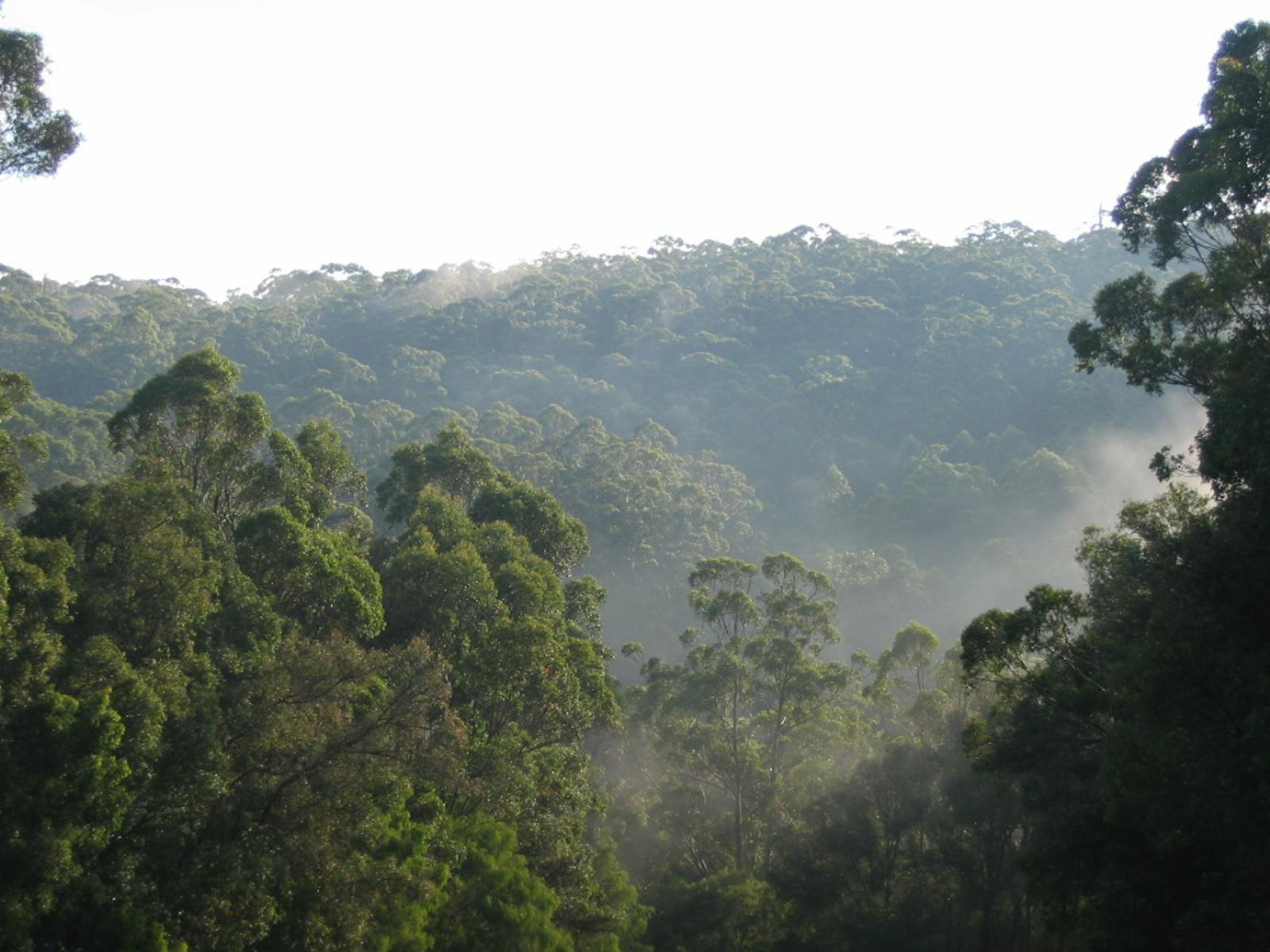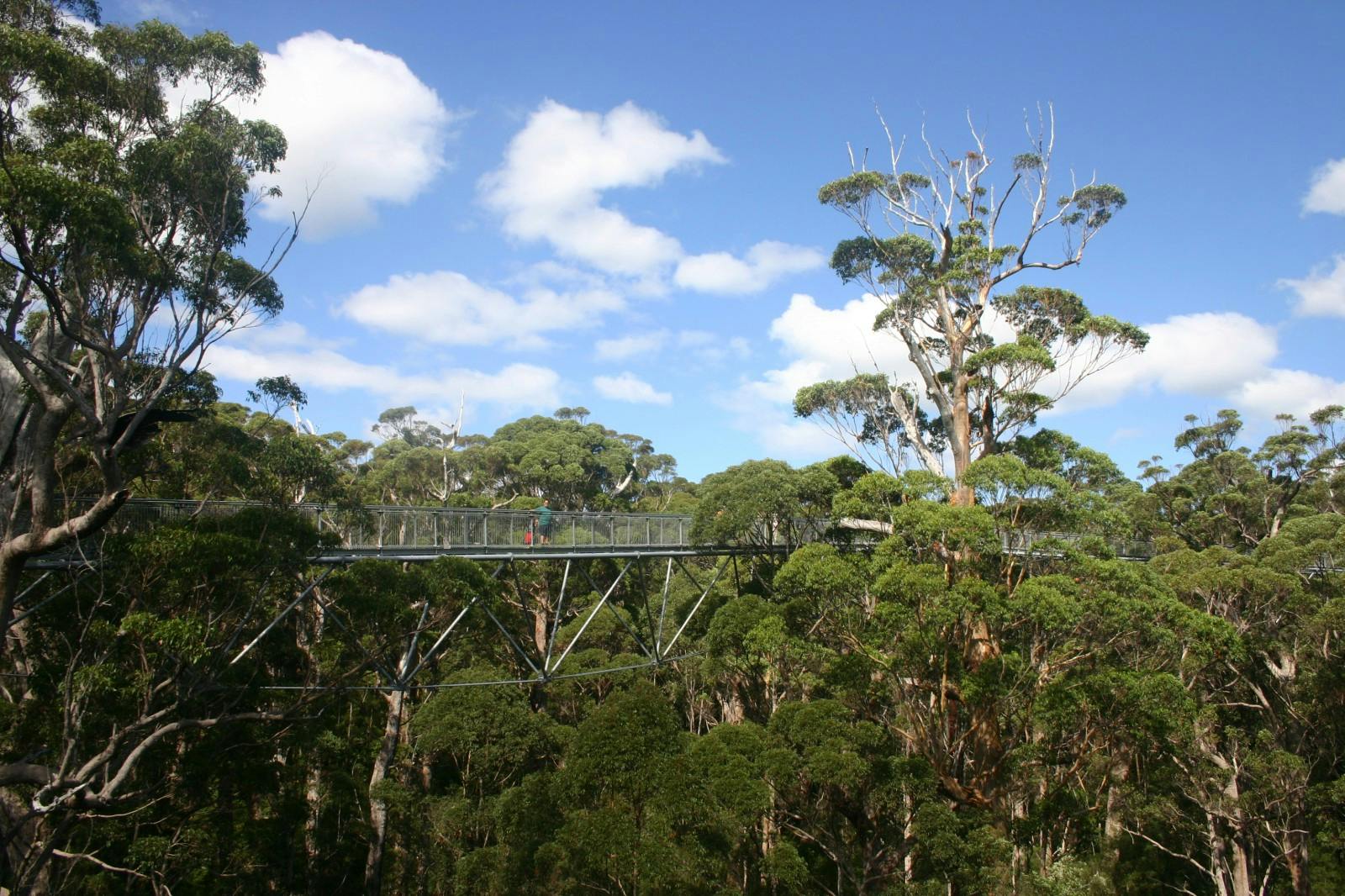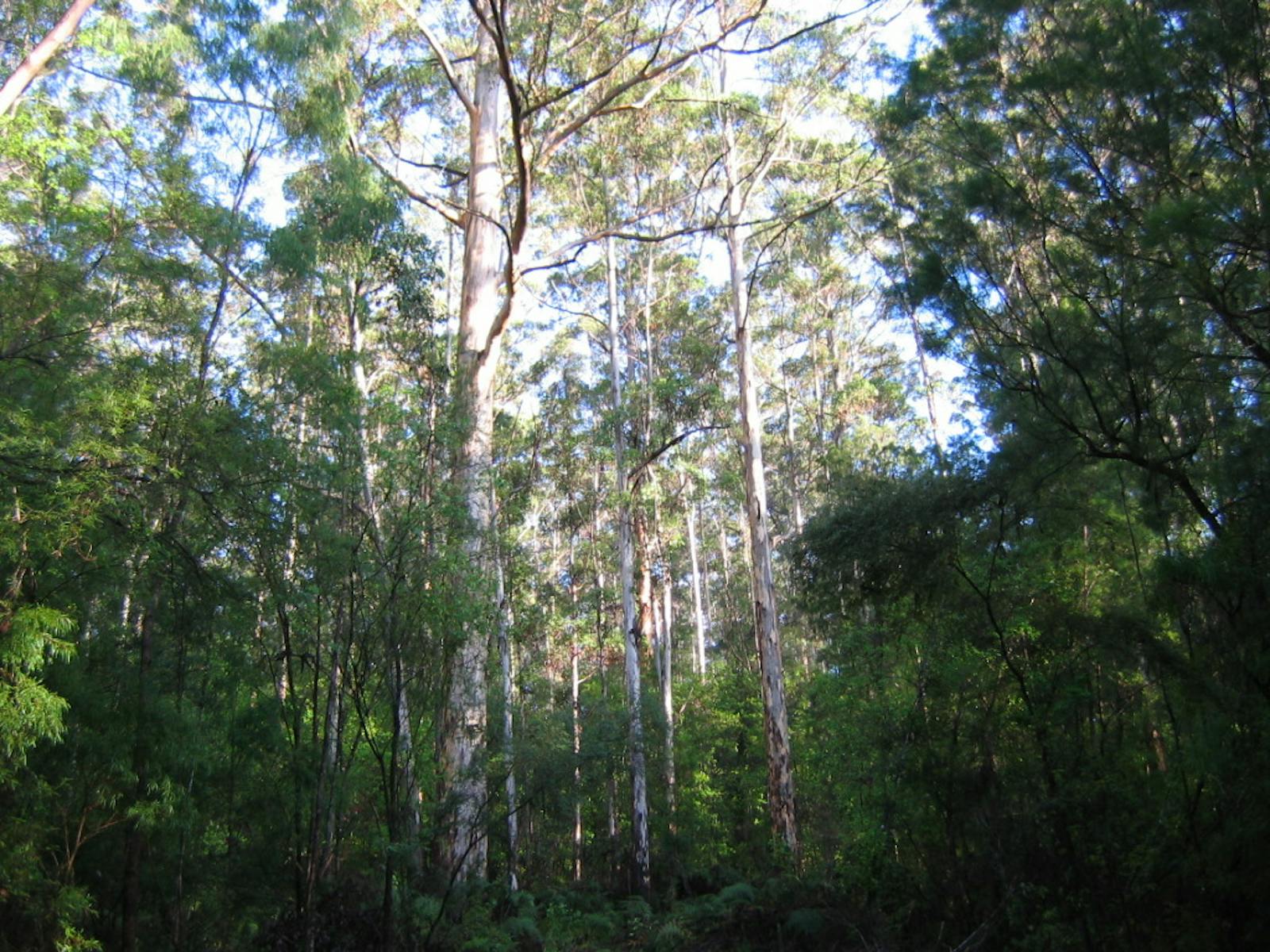Jarrah-Karri Forest and Shrublands
The ecoregion’s land area is provided in units of 1,000 hectares. The conservation target is the Global Safety Net (GSN1) area for the given ecoregion. The protection level indicates the percentage of the GSN goal that is currently protected on a scale of 0-10. N/A means data is not available at this time.
Bioregion: South Australian Mediterranean Forests, Woodlands & Scrub (AU5)
Realm: Australasia
Ecoregion Size (1000 ha):
847
Ecoregion ID:
202
Conservation Target:
61%
Protection Level:
8
States: Australia
The 90 m tall, wet forests of the southwestern tip of Australia are an isolated refuge for wet forest species separated from Australia’s eastern moist forests by the arid center of the continent. This is the wettest zone of Australia’s Southwest biodiversity hotspot, one of the world’s five Mediterranean-climate (hot, dry summers and cool, wet winters) regions that harbors globally rich and unique plant assemblages. The karri (Eucalyptus diversicolor) occurs with rates tingle tree (E. brevistylis), red tingle (E. jacksoni) and yellow tingle (E. guilfoylei), all only occurring within this region.
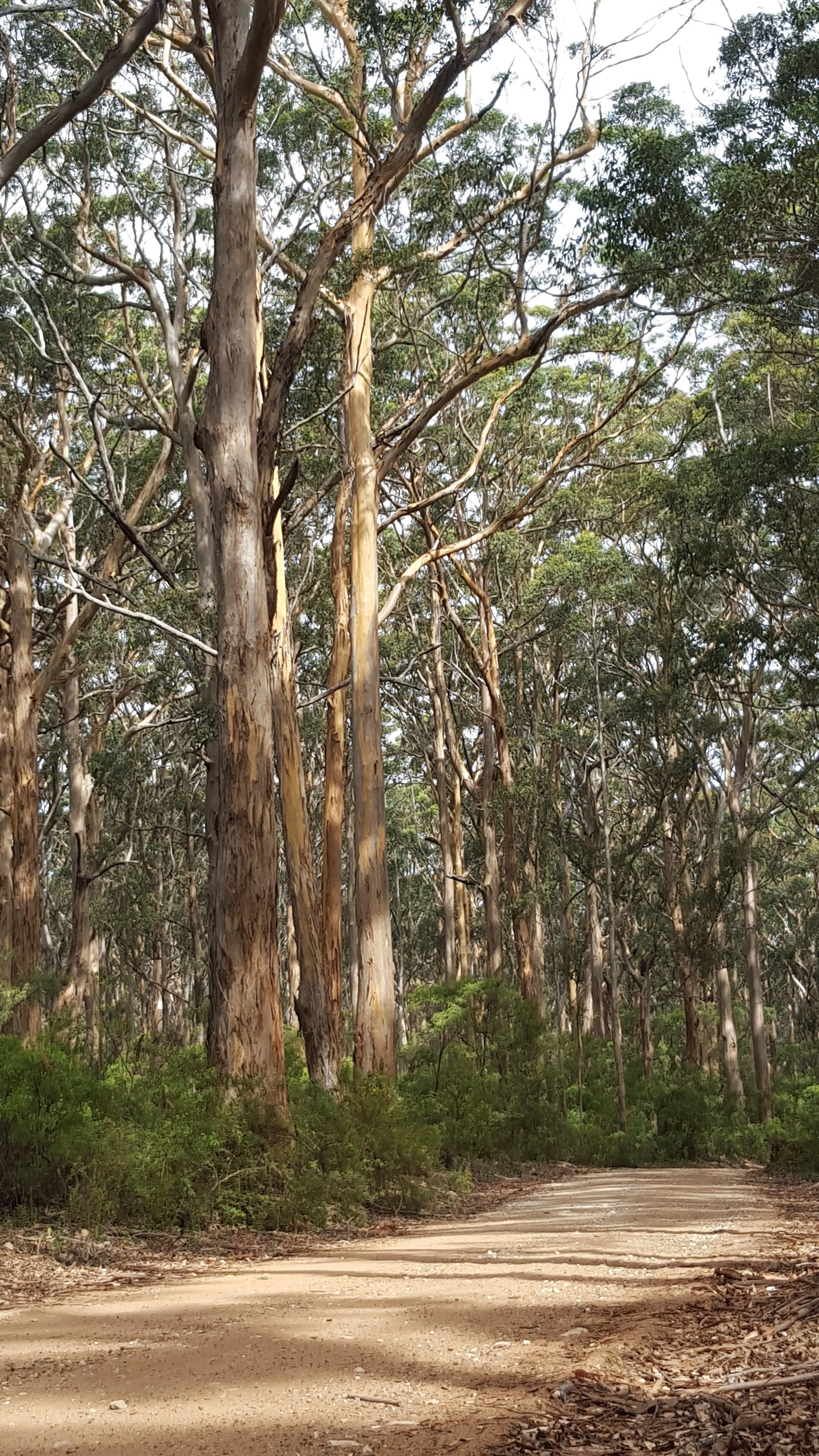
The flagship species of the Jarrah-Karri Forest and Shrublands ecoregion is the Karri eucalypt. Image credit: Creative Commons
These extraordinary forests have a thick understory of shrubs, such as coral vine (Kennedia coccinea), Wisteria, orchids, mimosas, myrtles, and proteas. The humid conditions in the winter allow for abundant epiphytes, liverworts, fungi, ferns, and mosses. Several highly distinct and ancient plants occur here in this Gondwanaland refuge, including Anthocercis sylvicola, the insectivorous Albany pitcher plant (Cephalotus follicularis), and wild plum (Podocarpus drouynianus).
On poorer, lateritic soils, one finds shorter (up to 60 m) jarrah (E. marginata) and marri (Cornymbia calophylla) forests. Corymbia ficifolia (red-flowering gum) is one of many endemic trees of the ecoregion. Low Banksia and jarrah woodlands, dune scrublands, and Melaleuca woodlands also occur. The broader region has around 6,700 plant species with nearly half of these found nowhere else.
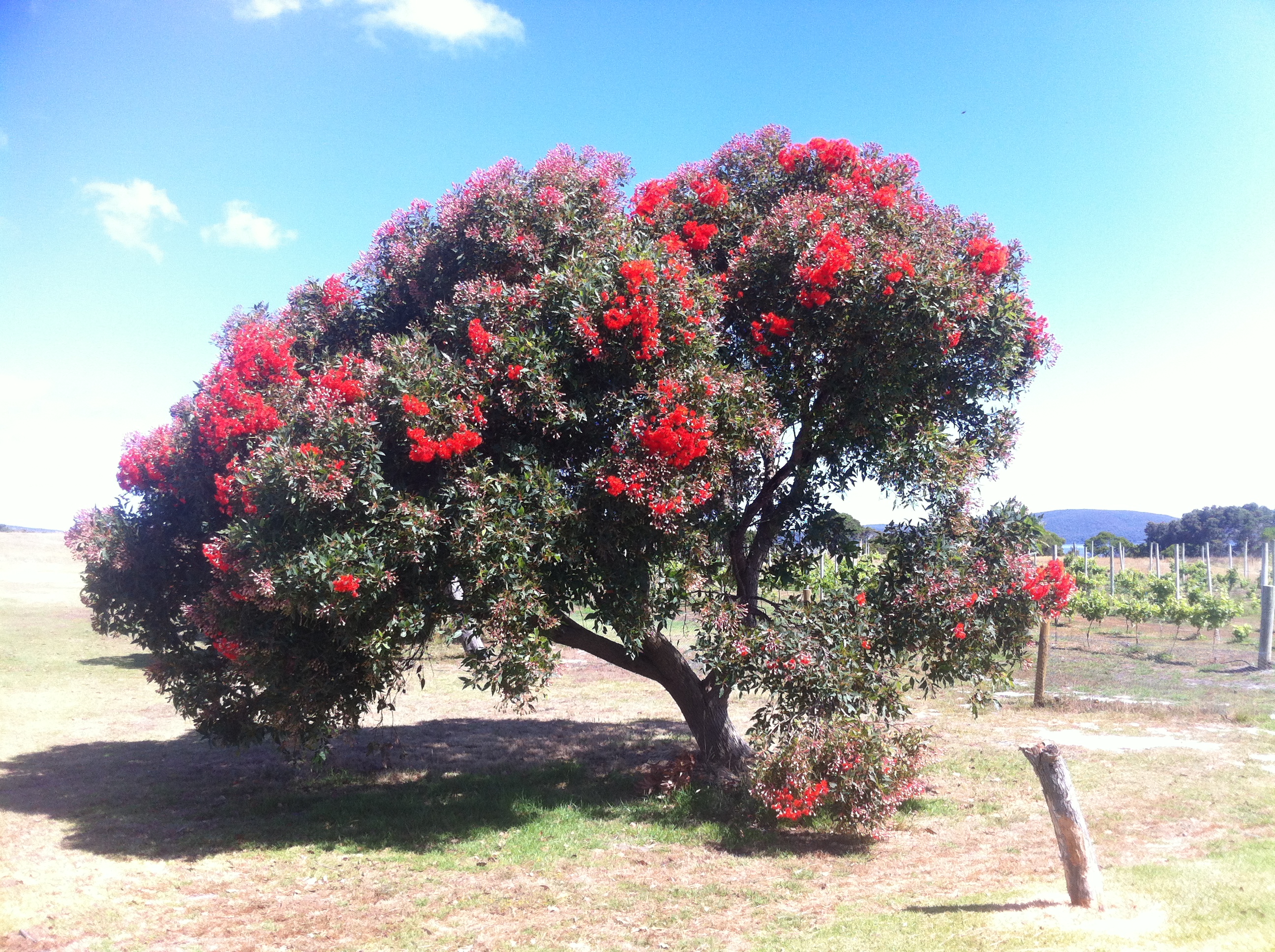
Corymbia ficifolia. Image credit: Creative Commons
The Jarrah-Karri is the most diverse ecoregion in this biodiversity hotspot. Mammals that live in the forests include western ringtail possum (Pseudocheirus occidentalis), chuditch (Dasyurus geoffroii) (particularly found in Jarrah forest), the brush-tailed phascogale (Phascogale tapoatafa), quokka (Setonix brachyurus), yellow-footed antechinus (Antechinus flavipes leucogaster), southern brown bandicoot (Isoodon obesulus), and woylie (Bettongia penicillata ogilbyi).
Birds are not particularly rich, though there are some that are largely restricted to the region, such as the red-eared firetail (Stagonopleura oculata) and the white-breasted robin (Eopsaltria georgiana), both of which occur only in the karri forest. The western bristlebird (Dasyornis longirostris), western whipbird (Psophodes nigrogularis nigrogularis) and western ground parrot (Pezoporus wallicus flaviventris) inhabit the region's heath vegetation. The noisy scrub-bird (Atrichornis clamosus) lives in vegetated gullies. Endemic frogs include orange-bellied frog (Geocrinia vitellina), the white-bellied frog (Geocrinia alba), and the sunset frog (Spicospina flammocaerulea). Insects and fish also exhibit high rates of endemism.
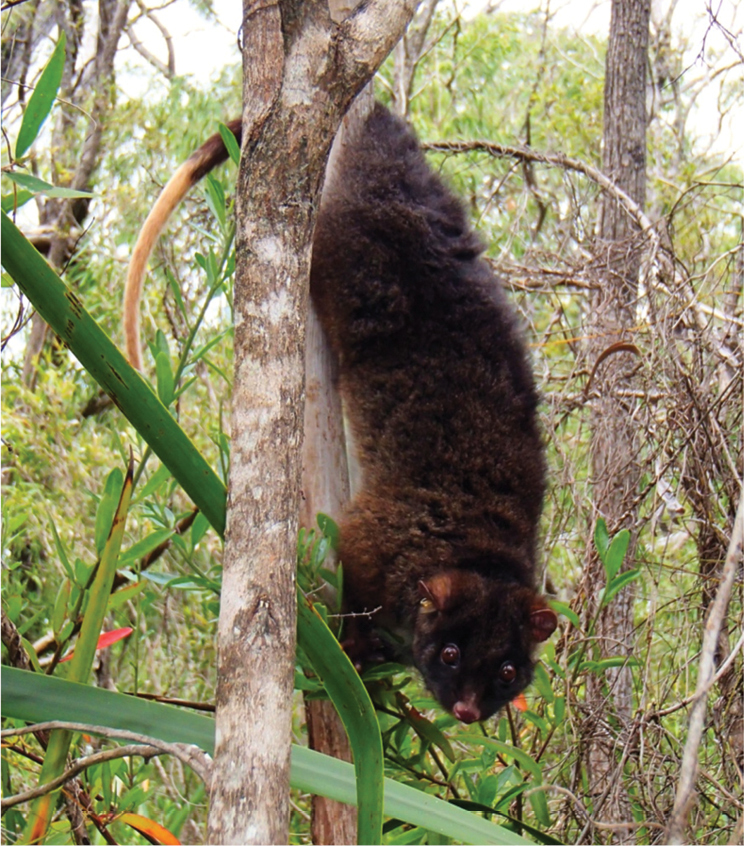
Western ringtail possum. Image credit: Roberta Bencini, Creative Commons
Logging of these extraordinary and rare forests is still ongoing. Habitats are being lost and fragmented. As elsewhere in Australia, introduced predatory feral cats and foxes wreak havoc on native wildlife populations. Too frequent wild fires, most started by people, are degrading and altering native vegetation. The dieback diseases caused by Phytophthora threatens forests throughout the region and is spread further through logging and infrastructure activities.
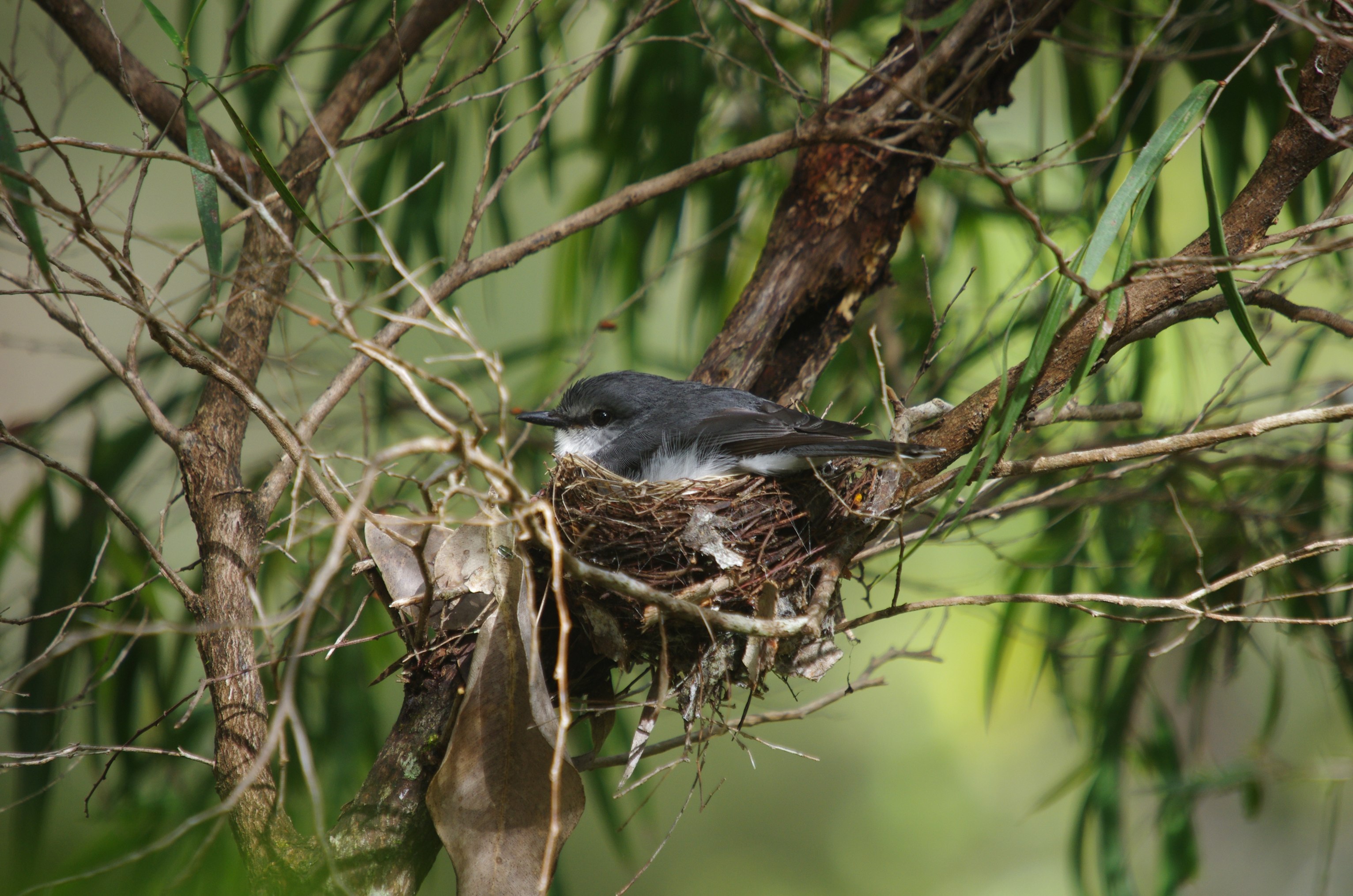
White-breasted robin. Image credit: Creative Commons
Shannon National Park and D’Entrecasteaux National Park are some of the large protected areas in the Jarrah Karri. Nevertheless, over 70% of the protected areas identified are smaller than 1 km2, a size that cannot effectively conserve biodiversity over the long-term. The key conservation actions for the next decade are to: 1) immediately end all forms of logging in these globally distinct forests; 2) intensify efforts to control foxes and feral cats in and around protected areas; and 3) restore and protect corridors among key native habitat blocks.
Citations
- Coates DJ, KA Atkins. 2001. Priority setting and the conservation of Western Australia’s diverse and highly endemic flora. Biological Conservation 97:251–263.
- Department of Conservation and Land Management (CALM). 1997. Discovering Valley of the Giants and Walpole-Nornalup National Park. Western Australia Department of Conservation and Land Management, Como, Australia.
- Southwest Australia Ecoregion Initiative. 2006. The Southwest Australia Ecoregion -- Jewel of the Australian Continent. SAEI, Wembley. Accessed 1 June 2019 at https://www.bibbulmuntrack.org.au/media/files/jewel_of_the_australian_continent_1.pdf
